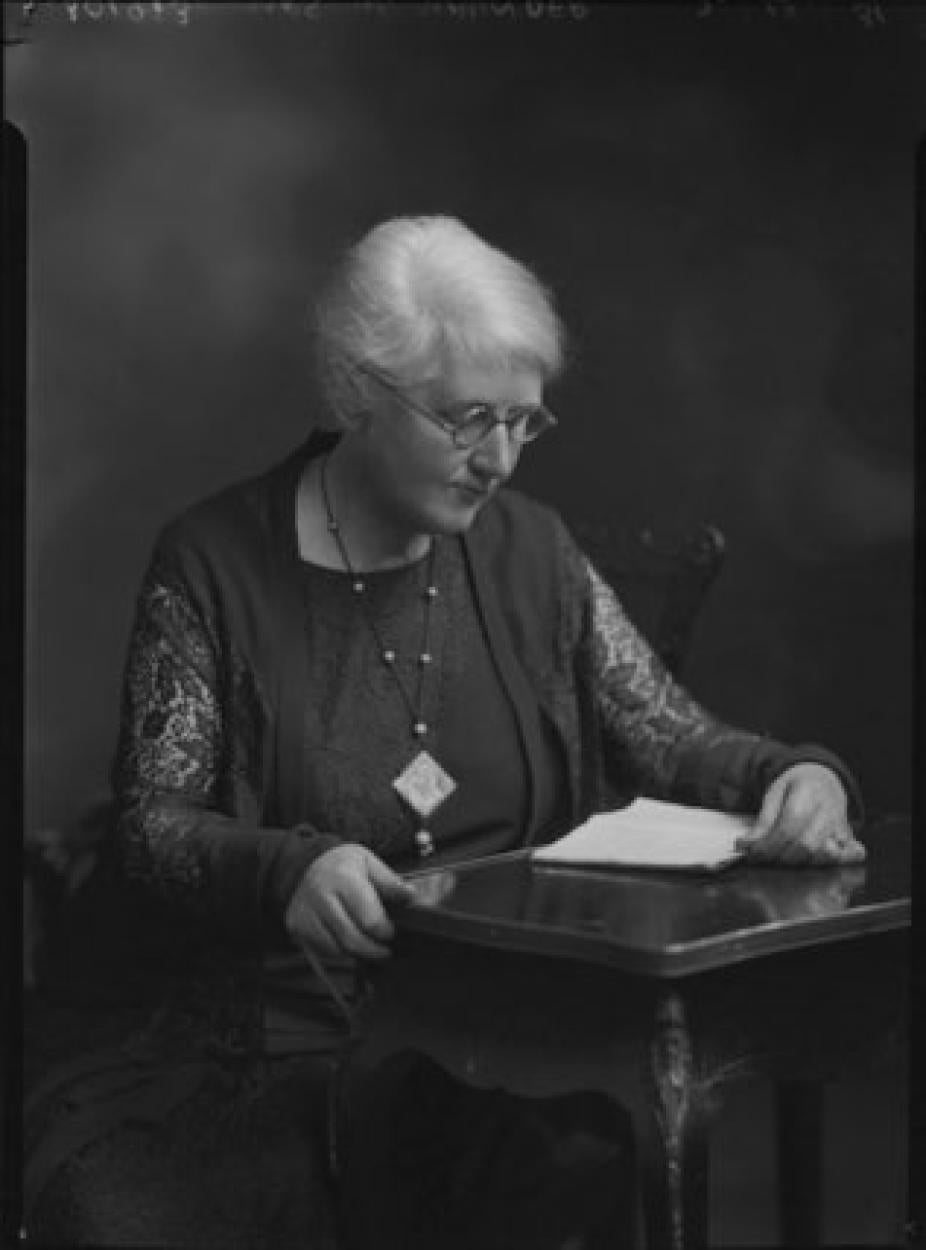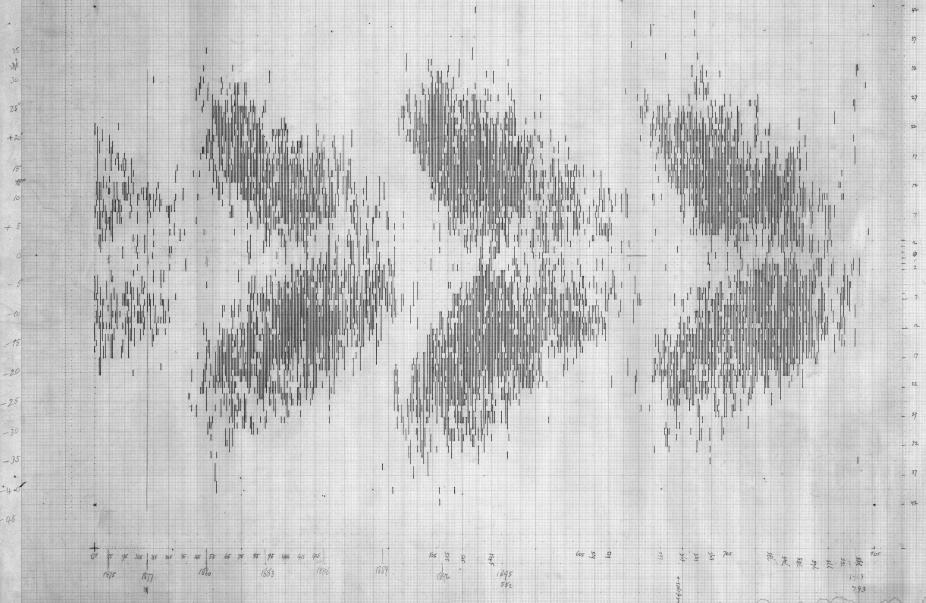If you have visited the High Altitude Observatory (HAO) at NCAR in Boulder, CO, you may recall seeing the Maunder’s original butterfly diagram. The chart resembles three butterflies traveling west. Drawn by Annie S.D. Maunder and E. Walter Maunder, it demonstrated for the first time the movement of sunspot emergence from the poles toward the equator over the sun's 11-year cycle. In October of 2016, the Royal Observatory at Greenwich remembered Annie Maunder as one of the first women elected as a RAS Fellows: the A & G Forum (News, Views, and Events from the RAS Fellows) stated that "Annie Maunder was finally elected to RAS Fellowship in 1916."

Annie Maunder
Annie was an outstanding observer and interpreter of sun activity. She was born Annie Scott Dill Russell in 1868 in Strabane, in what is now Northern Ireland. Although she was unusually well-educated for a women for her time and she had passed the Cambridge University degree examinations with honors in mathematics (1889), she was not allowed to receive a degree. Annie had the foresight to mail her butterfly diagram from London to the US, for protection, during the English Blitz. In 1946 it was gifted to Walter Orr Roberts where it remains on permanent display at HAO.
An excerpt from the a 2000 interview with Tom Bogden shares that Annie Maunder explained: "We made this diagram in a week of evenings, one dictating and the other ruling these little lines. We had to do it in a hurry because we wanted to get it before the [Royal Astronomical] Society at the same meeting as the other sunspot observers, whose views we knew to be heretical. As it turned out the diagram wiped [the other observers'] papers clean off the slate."

Maunder Diagram from 1940 by Annie Maunder and her husband Walt.
Annie worked with Walter Maunder at the solar department of the Greenwich Royal Observatory in England as a "lady computer" from 1891 until they married in 1895. Although Annie was required to resign when she married her boss, the two continued to collaborate on their own. Annie accompanied her husband on eclipse expeditions and developed a camera for photographing the corona.